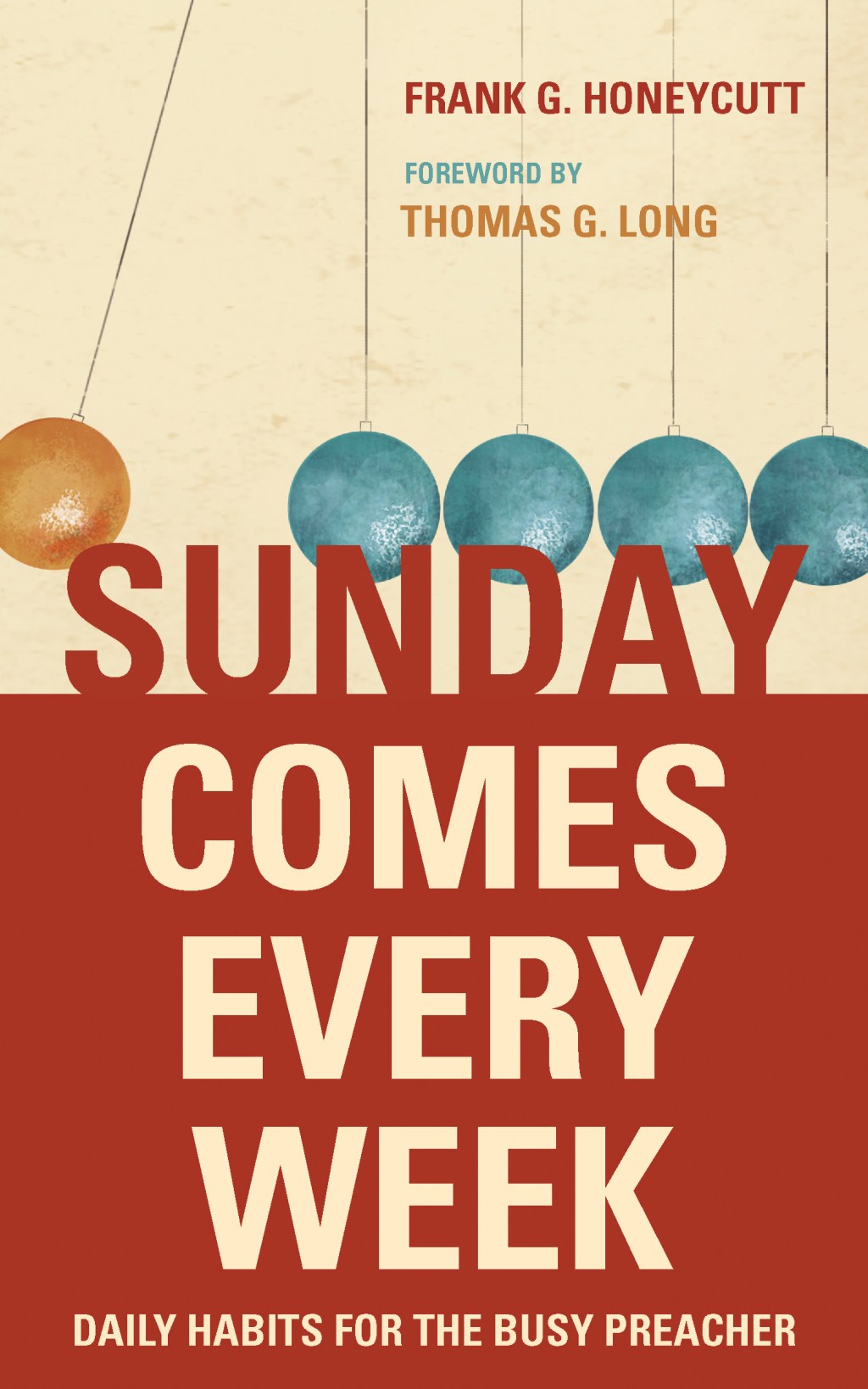Frank G. Honeycutt
Grand Rapids: Wm. B. Eerdmans Publishing Co., 2019. 160 pages. Softcover. $19.99.

Reviewed by Gary W. Zieroth on 04/01/2020
This book was written primarily for recent seminary graduates who need to help their congregations understand the primary role of the pastor as the preacher of the word. Frank Honeycutt, a retired ELCA pastor with more than thirty years’ experience in different parish settings, wants the novice pastor, who tends to be extra-busy those first few years, to develop daily habits of sermon study and writing throughout the week in order to build a healthy pastoral identity and to educate the congregation concerning the pastor’s raison d’etre (84). Because preaching can be difficult and exhausting work, which is never easy, Honeycutt helps the novice pastor to understand that there are no homiletical shortcuts in the preaching task. He states: “The truth is that a faithful preaching process shapes the entirety of one’s ministry for the long haul. The spiritual habits we develop throughout the week . . . ground us in the very disciplines that have nourished pastors in their callings for centuries” (85).
Not wanting his weekly homiletical task to seem too regimented or legalistic, Honeycutt believes that his process of writing a sermon, although it may not work for all pastors, will provide the necessary “habits” for those starting out. He considers the lectionary (for him the three-year cycle) a “tremendous gift” so that the novice preacher stays with large chunks of the Bible and learns to preach on the whole council of God and not on his own whims or desires. Even if the pastor has Monday (dubbed the “Listening” day) off, he advises the novice pastor to choose the text he will preach on the following Sunday and to come up with a single sentence to describe the sermon’s aim. Too bad he didn’t suggest the Collect of the Day as the starting point. By starting this way, says Honeycutt, the text begins its “percolation and marination” through the week.
Tuesday is the “Hearing” day. The pastor needs to get out of the church building for regular prayer as he focuses on his chosen text. Getting away from the church building the author deems crucial as a “fresh perspective” and “creative realities” are sought. With no distractions and mind and spirit focused, with a few note cards, the pastor can begin to raise questions about the text. Here on Day 2, the pastor begins to discern the truth, tenor, and tone of the text. Honeycutt sees the real importance of involving his own parishioners in the writing task. From young to old, homebound and hospitalized, he feels his people should be included in the sermonizing process, making them feel included as he raises these questions.
Wednesday is “Exegeting” day. Honeycutt doesn’t want the preacher to rely upon commentaries too early in the week, but now they can be utilized, but sparingly. He likes to construct sermons more from the people he meets than the books he reads. He feels it very important that he preaches from an understanding from different viewpoints. In so doing, he regularly befriends skeptics, atheists, and agnostics and sees them as “helpful preaching allies.” Sadly, throughout the book, he makes no mention of consulting the original languages in the homiletical task.
Thursday is “Naming” day, where the pastor now distills all his notes and observations so that a tightly worded (twelve words or less) theme statement is developed. Friday is “Writing” day. Honeycutt strongly believes that the pastor should carve out an uninterrupted four-hour period for writing. He did this faithfully on Fridays for thirty-one years. A manuscript is still important as each word and phrase is tested and tried. By speaking to many throughout the week, he constructs his sermon with “artful and measured language,” always keeping the “outsider” in mind. He typically reads the draft aloud three times (with changes made during each oral reading) before setting it aside the next morning. Some time is spent on Saturday to rehearse and revise. Sunday is the “Offering” day where much advice is given on the delivery.
There is much jam-packed into this small book. I would recommend this book to seminarians and novice pastors. There are no shortcuts in sermon preparation and faithful listening. By faithfully preparing and delivering sermons, pastors are modeling faithful discipleship for the congregation, and, over time, helping them to “fall in love with God’s life-changing Word” (126).



